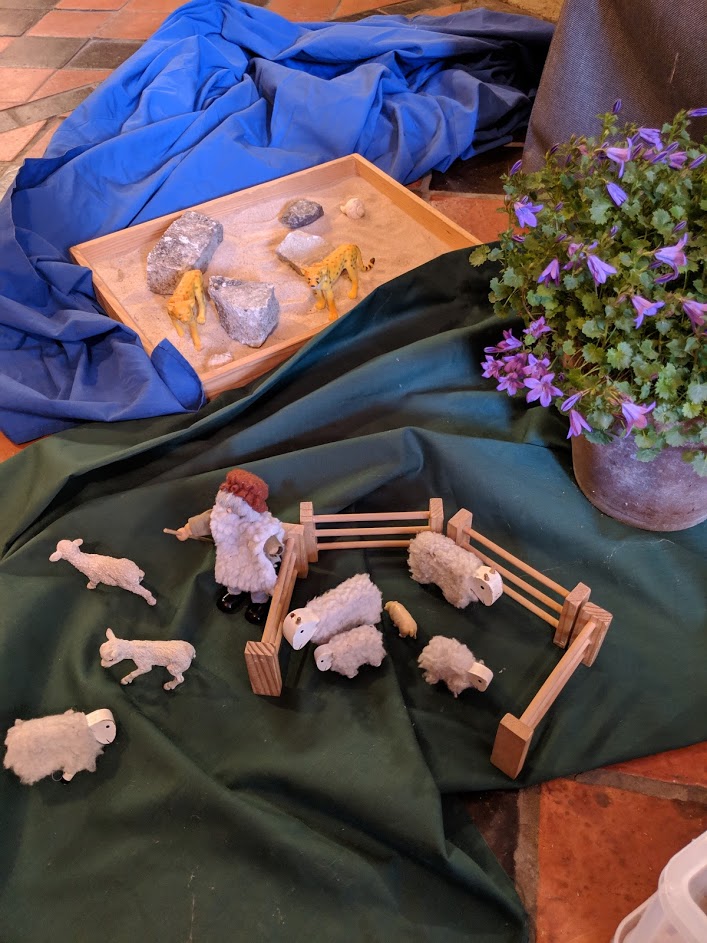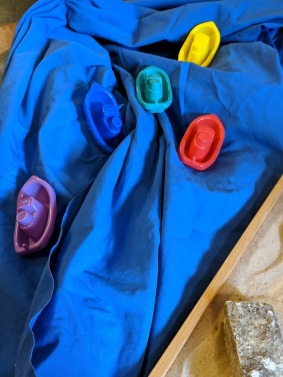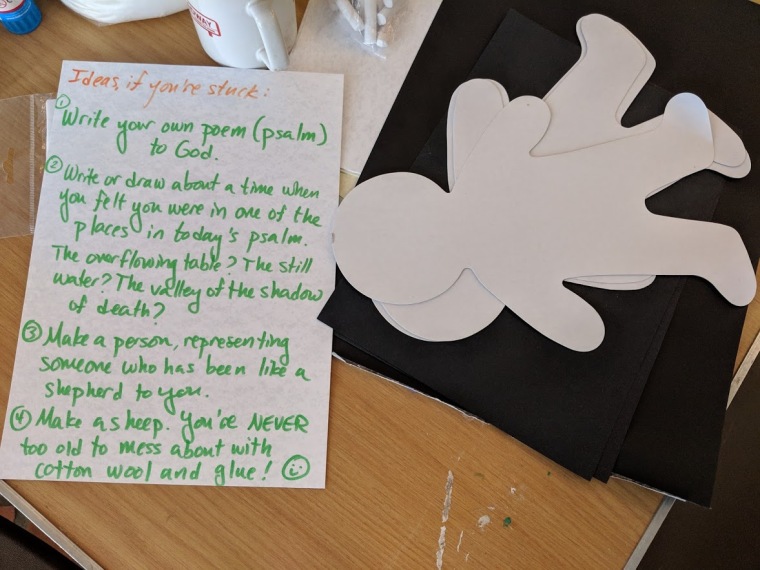I was stuck for ideas with my group on Sunday. It was half-term, so I knew we’d only have a few kids. They could be anywhere from age two to age sixteen. And we’re doing psalms and prophesies, so I couldn’t fall back on the power of a well-told story – I had to find a different way of engaging children with the text.
Here’s what I improvised. We ended up with only two kids – one age six and one age eleven – one of our regulars, and one who comes occasionally when he visits his grandmother, who’s a parishioner.
Lectio Divina is an ancient way of reading and entering into Scripture, in four parts: Read, Meditate, Pray, Contemplate. It is “intended to promote communion with God and to increase the knowledge of God’s word. It does not treat scripture as texts to be studied, but as the living word.” It was practised originally as part of monastic life.
I used the “Psalms for Young Children” book by Helene Marie Delval, and we sat in a circle around a selection of resources – wooden toys, the Jesus doll, some icons, Play-doh, our shepherd and sheep set, etc. (For an explanation and tutorial for that prayer board, click here.)

We passed the book around, each of us opening it randomly to a page and reading that page. I said you could pass your turn if you wanted, and if we’d had non-readers, I would have had them choose a page and then pass the book to someone to read it for them.

Then we took some quiet time to think, or to make something with the stuff in the middle of the circle.
Then we read the passage again.
Then we talked about anything we thought or felt about what we read, or about the pictures in the book, or about what we’d made.
Here, the Jesus doll was originally holding the heart, touching the arms of the heart with his arms. Then, after the next reading, the people were added.
One of the kids made a series of elaborate Play-Doh structures but he had squashed them up and put them away before I could get a photo of them after the service.
It led to a very thoughtful and relaxed atmosphere. I participated in making stuff during the appropriate time, which I think gave the kids permission to start messing with the materials too. It also meant I was participating alongside them, not giving instructions which they followed – we were doing this together.
Also, having the routine of “read, respond, read, discuss” meant we never had a long chunk of time where we were expected to sit still and listen. This means, paradoxically, it’s easier to create a contemplative atmosphere, since the need to fidget has an outlet permitted by the structure of the session and doesn’t need to find ways to rebel. And by setting the expectation of “open the book at random” rather than “choose a page,” I eliminated the possibility of a child taking ages leafing through the book to pick a page while the rest of us waited and kids got the fidgets.





